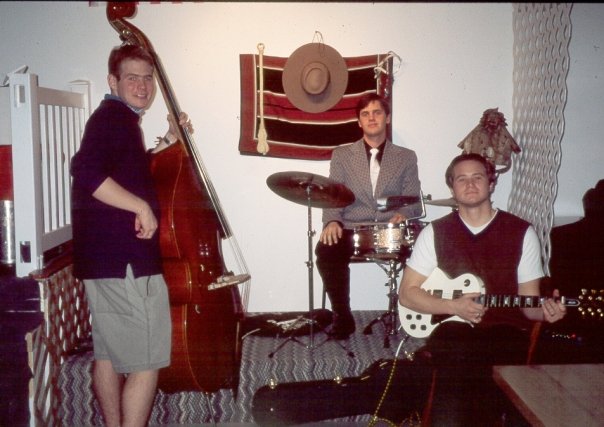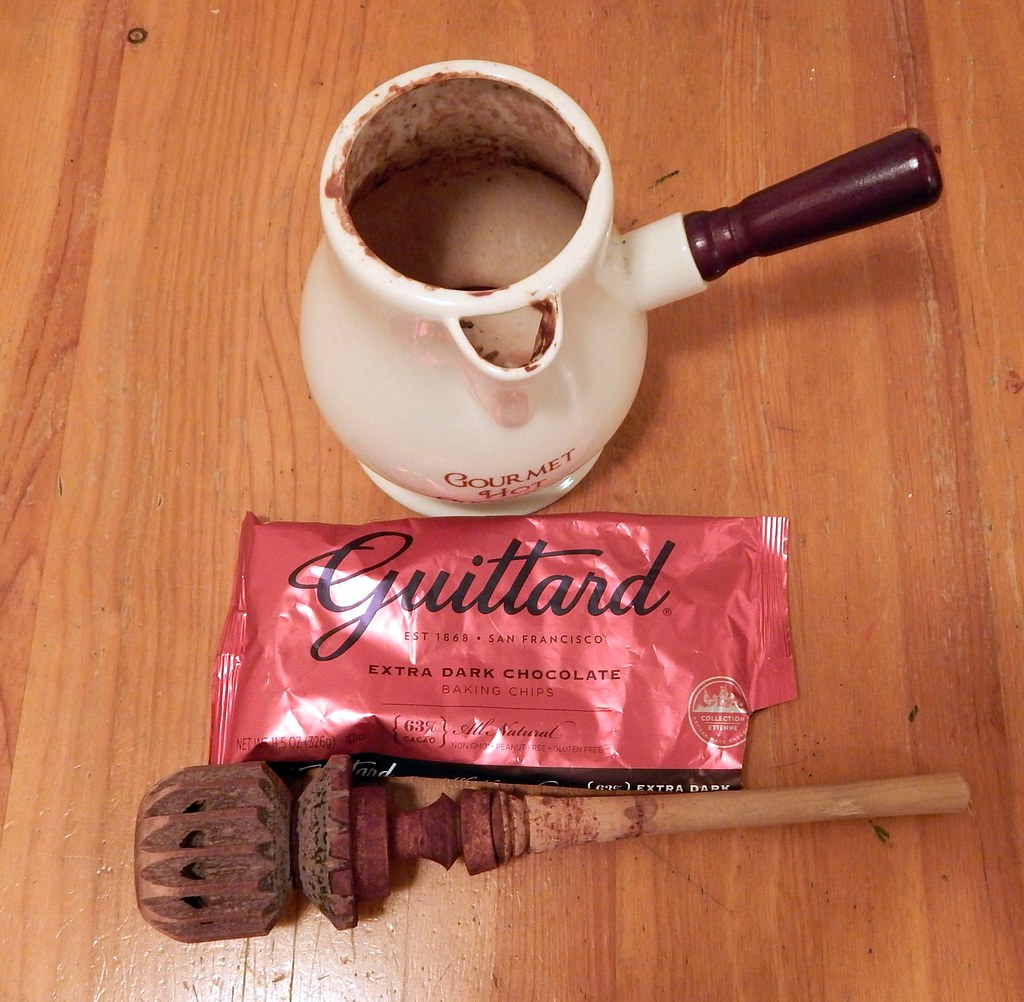| (This picture is a link: you can buy this chocolate on Amazon.) |
I wasn't going to do this at first, but then I figured, why not? After all, this is what I used when I first started making hot chocolate the old-fashioned way. For a long time, this was practically the only chocolate I used. And despite what I wrote about not knowing better, this chocolate is not bad. It's a decent, nice everyday chocolate, if you're into drinking this kind of stuff frequently -
like 17th-century Spaniards. In A New Voyage Round the World (that link will take you to a free ebook) William Dampier wrote:
The nuts of this coast of Caracas, though less than those of Costa Rica, which are large flat nuts, yet are better and fatter, in my opinion, being so very oily that we are forced to use water in rubbing them up; and the Spaniards that live here, instead of parching them to get off the shell before they pound or rub them to make chocolate, do in a manner burn them to dry up the oil; for else, they say, it would fill them too full of blood, drinking chocolate as they do five or six times a day.
I'm not to the point of drinking chocolate that often - not yet. And I'm sure that Baker's, as cheap as it is, isn't made from high-quality Venezuelan beans. (I'm guessing that it's made from forastero beans grown in West Africa.) This chocolate strikes me as a good one to use for backpacking trips or something of the sort. I say this because I'm thinking of the Dominguez-Escalante expedition, which carried chocolate as part of its provisions. I don't know for sure what kind of chocolate they had in Santa Fe to outfit overland expeditions like that, but I imagine it might have been relatively cheap, rugged stuff like this.
So, to establish a baseline, I whipped up some of this stuff for the family the other night. Here's the recipe:
- 4 ounces chocolate
- 4 Tablespoons raw cane sugar
- a little splash of fine vanilla (my sister taught us how to make it by soaking vanilla beans in brandy)
- 1 cup boiling water
My sweetie described the flavor as milder and subtler, and that for some reason it reminded her of trees. Our seven-year-old found it rather bitter, while I found the sweetness level just about right. The baby thought it was grand, as always.
 |
| Detail from Le Dejeuner by François Boucher; the full image is at the bottom of this post. |
 |
| Image courtesy of Wikimedia commons. |








